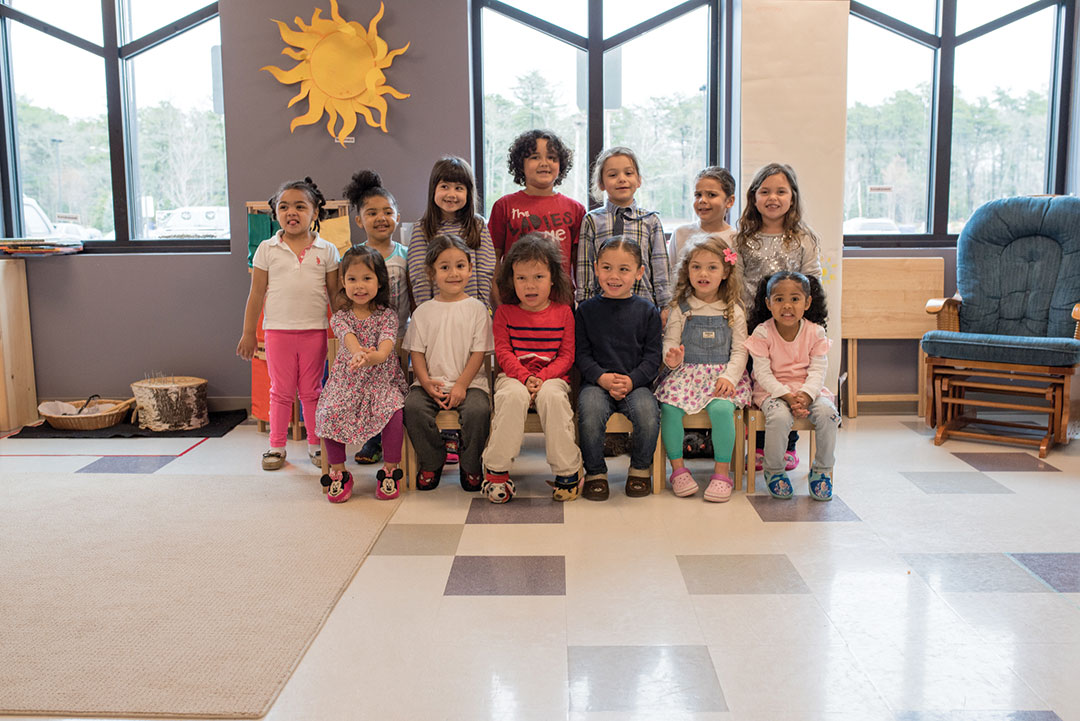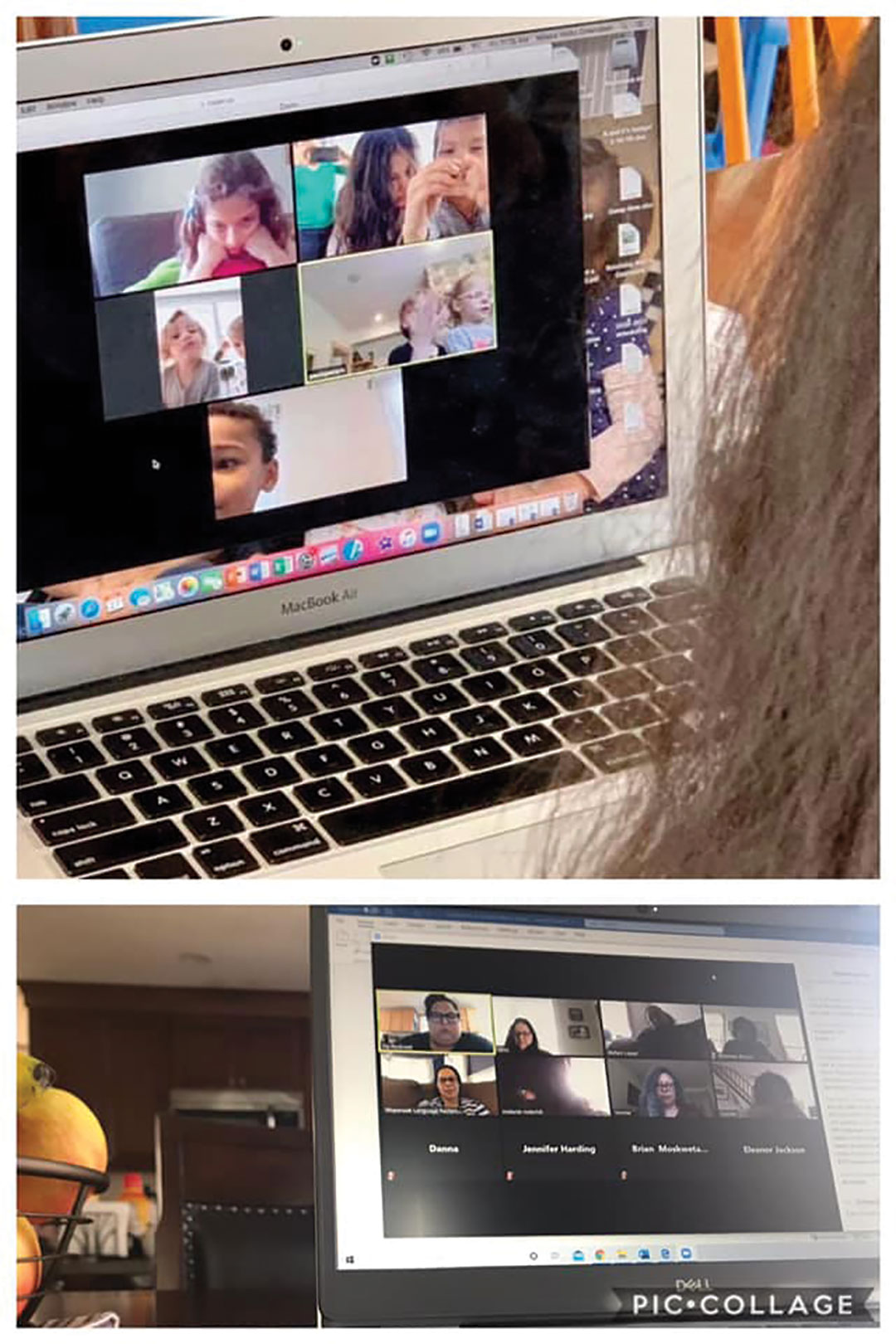by Skip Finley
The Wôpanâak Language Reclamation Project and The Weetumuw School
Geologists estimate Cape Cod and the islands were formed by glaciers 10,000 years ago. Anthropologists indicate that the Wampanoag inhabited all of southeastern Massachusetts 12,000 years ago.
The Wampanoag people have a story that was passed down through oral history of the giant benevolent being, Moshup, who dragged his foot through the land to allow water to fill in and form the islands of Martha’s Vineyard, Nantucket, and Noman’s Land. He also taught the people to fish, catch whales, and presided over the people’s destiny.
This story, which was passed down through generations, was almost always told in Wôpanâak, the language of the People of the First Light. However, some anthropologists invalidated oral histories of Native people and ignored knowledge of their past, which led to stories and a language being lost. [1]
Four hundred years ago, the Wampanoag met the Pilgrims in Provincetown and brought them food at Plymouth in 1621 at what is termed the first Thanksgiving. In 1648, Martha’s Vineyard’s Thomas Mayhew proselytized Hiacoomes, who is believed to have been the first Native converted to Christianity. This was thanks to Hiacoomes and Mayhew having learned to speak each other’s languages.[2]


In 1663, John Eliot translated the Bible into Wôpanâak, the first book of any kind published in the New World. The Bible, along with a number of documents (like deeds and wills), was written by Native speakers and has been studied by linguists for years. Wôpanâak, in fact, was the first native language to use an alphabetic writing system.[3]
There were originally over 40,000 members of the Wampanoag. Today, about 3,000 remain. Over time, Wôpanâak slipped away and was not used by Wampanoag for well over a century. For hundreds of years, they have not had a spoken language to share their cultural stories and traditions.
As long as 500 years ago, the Wampanoag’s oral history predicted the loss of its language, but, according to the prophecy, a woman in the east would someday bring it back. That came true in 1993, when jessie little doe baird had recurring dreams of seemingly familiar people speaking an unfamiliar language. Driving through Cape Cod, it occurred to her that the street names were Wampanoag words, which she says, allowed her to interpret the dreams as a call from her ancestors. She and Aquinnah Wampanoag elder Helen Manning co-developed the Wôpanâak Language Reclamation Project to relearn and teach the native language.[4]
Fun With Words
Here are some words used in our every day American language that are derived from Wôpanâak:
Moccasin:
Mahkus (mah-kus)
Covers the whole foot
Skunk:
Sukôk (su-konk)
Ejects body fluid
Moose:
M8s (moos)
moose
Additionally there are many locations that still retain the place names in the original Wôpanâak language.
Massachusetts
Mâsach8sut (maa-sa-choo-sut)
Translation: Place of the foothill. This was probably referring to the Blue Hills.
Mashpee
Mâseepee (maa-see-pee)
Translation: Big water. This refers to Mashpee Pond.
Cotuit
Kut8ut (ku-too-ut)
Translation: Talking place. This was most likely a place for meetings.
Sippewisset
Seep8eesut
Translation: Brook Place. This refers to a particular brook there.
Monamascoy
Mônâmashkayut
Translation: Abundant grass and herb place.
Aquinnah
Âhqunah
Translation: The end of the island.

Devoted to resurrecting Wôpanâak, jessie little doe baird spent many years studying the language. The Massachusetts Institute of Technology became involved when baird began working with the late Ken Hale, a renowned linguistic scholar from MIT where baird earned her master’s in Algonquian Linguistics.[5] Once her research was complete, jessie little doe baird developed an introduction to the grammar of the language and created a curriculum for teaching it with a dictionary that has over 11,000 words.
Propitiously, and likely with ancestors who had greeted the Pilgrims smiling on, jessie little doe baird and her husband Jason Baird had a daughter, Mae Alice. Born on July 4, 2004 during the annual Mashpee Wampanoag Powwow, “kuweeqâhsun” was the first word baird spoke to her baby, which means “you are in the light.” It was the perfect introduction to the child who would become the first fluent Wôpanâak speaker in seven generations.[6]
Now Vice-Chairwoman of the Mashpee Wampanoag Indian Tribal Council, jessie little doe baird taught Mae Alice to speak Wôpanâak, and in October 2012, she hired Jennifer Weston to oversee the development of a school to teach other Native children their language. Weston, who now serves as director of WLRP and the Mashpee Wampanoag Tribe’s Language
Department, initiated a partnership with the Mashpee Wampanoag Tribe’s Education Department and the Montessori Academy of Cape Cod in North Falmouth to begin training Wôpanâak language teachers in the Montessori method. [7] Since then, four WLRP teachers have become certified Montessori Classroom Directors through the Institute of Guided Studies.
Weetumuw School principal Nitana Hicks Greendeer and a staff of nine operate the school that is available to enrolled and household members (tribal or non-tribal) of the four Wampanoag communities of Mashpee, Aquinnah, Assonet, and Herring Pond. Participants fondly call it the “Wampessori” School.
The mission of the school is preparing students for academic excellence and community leadership by instilling traditional Wampanoag values of respect, honesty, compassion, humility, bravery, and gratitude through Wôpanâak language immersion and culture-based education using the Montessori model—without English. Mukayuhsak Weekuw (The Children’s House) teaches preschool and kindergarten students and Wushkeenune8ak Weekuw (The Young People’s House) offers grades 1-3, with plans to grow to serve fourth to sixth graders. The Wôpanâak Language Reclamation Project also offers daily language classes for students in grades eight through twelve at Mashpee middle and high schools, and it also plans to offer a new seventh grade class in the spring.
The original $890,000 grant for the Weetumuw School required that children receive 500 hours a year of language immersion but under WLRP’s model they’ve received one thousand hours annually during the 8:30 a.m. to 3:30 p.m. day (pre-pandemic, which has moved most classes online for shorter sessions). The Weetumuw School is one of only about 50 tribal language schools in the country.[8] Said jessie little doe baird; “Words on paper are not a language. A language lives through the people who speak it”.[9]
The Wôpanâak Language Reclamation Project (WLRP) now has 15 adult speakers of the Wampanoag language and over 100 children at various levels of fluency. Since the project started over 1,000 household members have been exposed to the language.
For more information visit: wlrp.org;
or to place a donation, send to Wôpanâak Language Reclamation Project, P.O. Box 2241,
Mashpee, MA 02649
[1] Katharine Vickers Kirakosian, “Curious Monuments of the Simplest Kind: Shell Midden Archaeology in Massachusetts,” University of Massachusetts Amherst, Doctoral Dissertations and Theses, April 2014.
[2] Skip Finley, Historic Tales of Oak Bluffs, The History Press, Charleston, South Carolina, 2019
[3] Nicole Carroll, “The Language Had Gone Quiet,” USA Today, usatoday.com, August 27, 2020
[4] Conversations with Jennifer Weston
[5] Mashpee Wampanoag Tribe, Council Members, mashpeewampanoagtribe-nsn.gov/council-members
[6] Ellen L. Lutz, “A Language Out of Time,”• Cultural Survival, culturalsurvival.org, June 2007.Â
[7] Elsa Partan, “Wampanoag Immersion Preschool Gets Started,”• The Cape, Coast, and Islands NPR, GBH Education Foundation, capeandislands.org, May 4, 2016.Â
[8] Angela Rowlings, “Wompanoags Resurrect a Language in Schools,”• Boston Herald, bostonherald.com, May 27, 2018.Â
[9] Nicole Carroll, “The Language Had Gone Quiet,”• USA Today, usatoday.com, August 27, 2020

